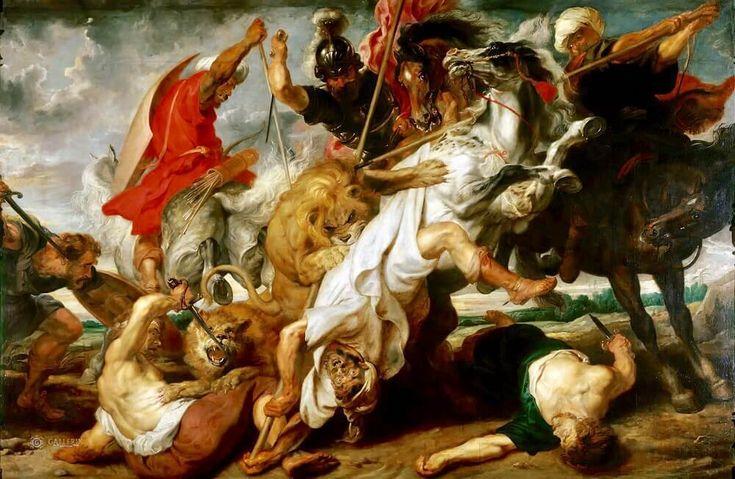
Lion Hunt by Rubens. Emotions, dynamics and luxury "in one bottle"
Contents:
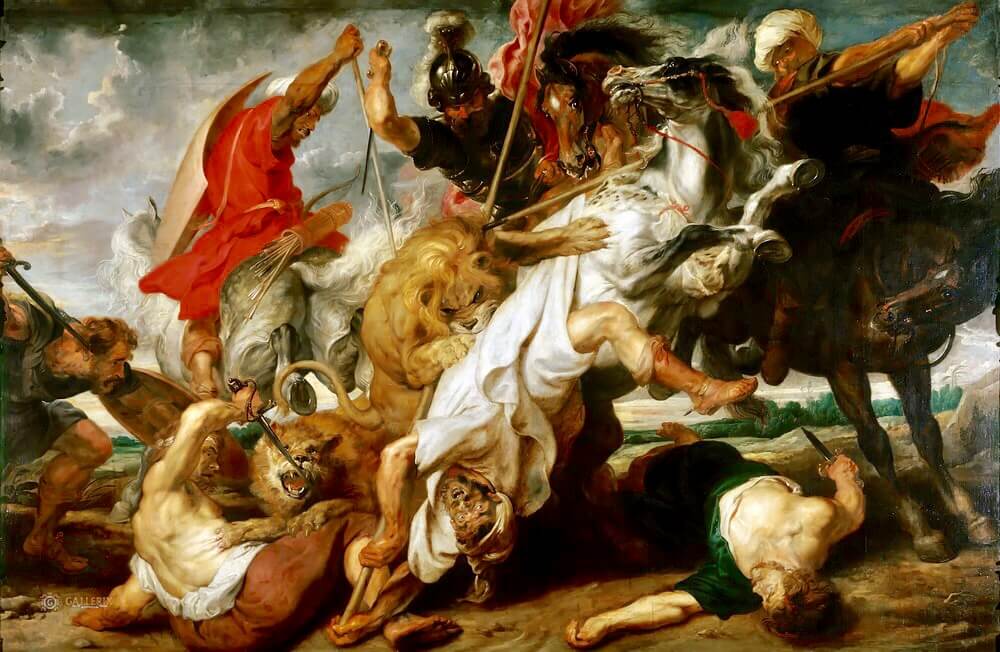
How to combine chaos with harmony? How to make mortal danger beautiful? How to depict movement on a fixed canvas?
All this was masterfully embodied by Peter Paul Rubens. And we see all these incongruous things in his painting “Hunting for Lions”.
"Hunting for lions" and baroque
If you love baroque, then most likely you love Rubens. Including his "Lion Hunt". Because it has everything that is inherent in this style. And yet, it is executed with incredible craftsmanship.
Everything boils in it, like in a cauldron. People, horses, animals. Bulging eyes. Open mouths. Muscle tension. Swing the dagger.
The intensity of passions is such that there is nowhere else to go.
When I look at the picture, I myself begin to boil inside. In the ears - a barely perceptible noise of struggle. The body begins to spring slightly. The ebullient energy of the picture is inevitably transmitted to me.
These emotions are in every detail. There are so many that it's dizzying. Well, baroque "loves" redundancy. And Lion Hunt is no exception.
To fit four horses, two lions and seven hunters in close-up into one picture is a lot of effort!
And all this is luxurious, pompous. Baroque is nowhere without it. Even death must be beautiful.
And also how well the “frame” was chosen. The stop button is pressed at the climax. Another fraction of a second, and the brought spears and knives will pierce into the flesh. And the bodies of hunters will be torn apart by claws.
But baroque is theater. Absolutely repulsive bloody scenes will not be shown to you. Just a premonition that the denouement will be cruel. You can be horrified, but not disgusted.
"Hunting for lions" and realism
Particularly sensitive can relax (this is me, including myself). In reality, no one hunted lions like that.
Horses will not approach a wild animal. Yes, and the lions are more likely to retreat than to attack larger animals (for them, the horse and rider appear to be a single creature).
This scene is a total fantasy. And in a luxurious, exotic version. This is not a hunt for defenseless roe deer or hares.
Therefore, the customers were relevant. The highest aristocracy, who hung such huge canvases in the halls of their castles.
But this does not mean that baroque is the “zero” of realism. The characters are more or less realistic. Even wild animals, which Rubens most likely did not see live.
It is now available to us images of any animals. And in the 17th century, you won’t see an animal from another continent so easily. And the artists allowed a lot of blunders in their image.
What can we say about the 17th century, when Rubens lived. If in the 18th century, for example, a shark could be written wonderfully. Like John Copley.
Read about it in the article “An unusual picture: the mayor of London, a shark and Cuba”.
site "Diary of painting: in each picture - history, fate, mystery".
» data-medium-file=»https://i2.wp.com/www.arts-dnevnik.ru/wp-content/uploads/2016/05/image-47.jpeg?fit=595%2C472&ssl=1″ data-large-file=”https://i2.wp.com/www.arts-dnevnik.ru/wp-content/uploads/2016/05/image-47.jpeg?fit=900%2C714&ssl=1″ loading =”lazy” class=”wp-image-2168 size-full” title=”“Lion Hunt” by Rubens. Emotions, dynamics and luxury “in one bottle”" src="https://i1.wp.com/arts-dnevnik.ru/wp-content/uploads/2016/05/image-47.jpeg?resize=900% 2C714&ssl=1″ alt=”“Lion Hunt” by Rubens. Emotions, dynamics and luxury “in one bottle”" width="900″ height="714″ sizes="(max-width: 900px) 100vw, 900px" data-recalc-dims="1″/>
So we can only admire the talent of Rubens to write what he himself did not see with his own eyes, so realistically. Something tells me that his shark would have come out more believable.
Orderly Chaos in Lion Hunt
Despite the chaos of hooves, muzzles and legs, Rubens masterfully builds a composition.
With spears and the body of a man in white, the picture diagonally beats into two parts. All other details are strung on this diagonal axis, as it were, and not just scattered around the space.
In order for you to understand how skillfully Rubens built the composition, I will cite for comparison a painting by his contemporary Paul de Vos. And on the same topic of hunting.
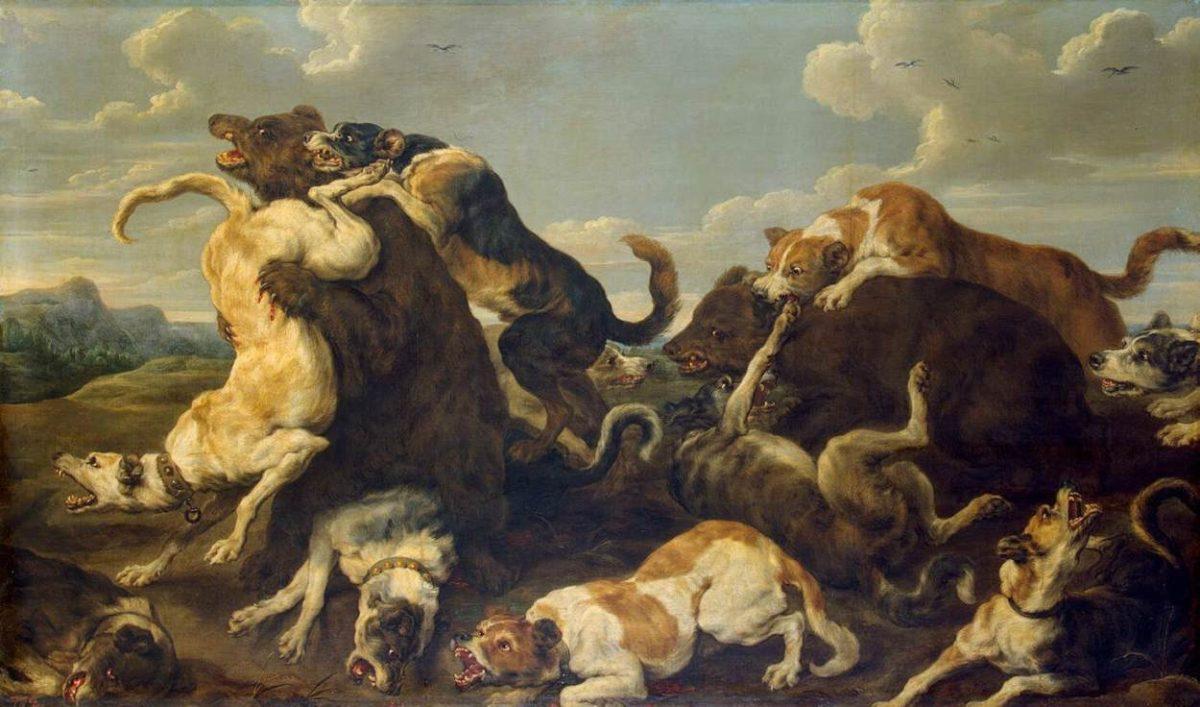
There is no diagonal here, but rather dogs scattered on the ground mixed with bears. And the bears are not like that, you see. Their muzzles are more like wild boars.

"Hunting for lions", as part of the picturesque "series"
The Lion Hunt is not Rubens' only work on this subject.
The artist created a whole series of such works that are in demand among the nobility.
But it is the "Lion Hunt", stored in the Pinakothek in Munich, that is considered the best.
Although in this series there is an even more exotic "Hippo Hunt".
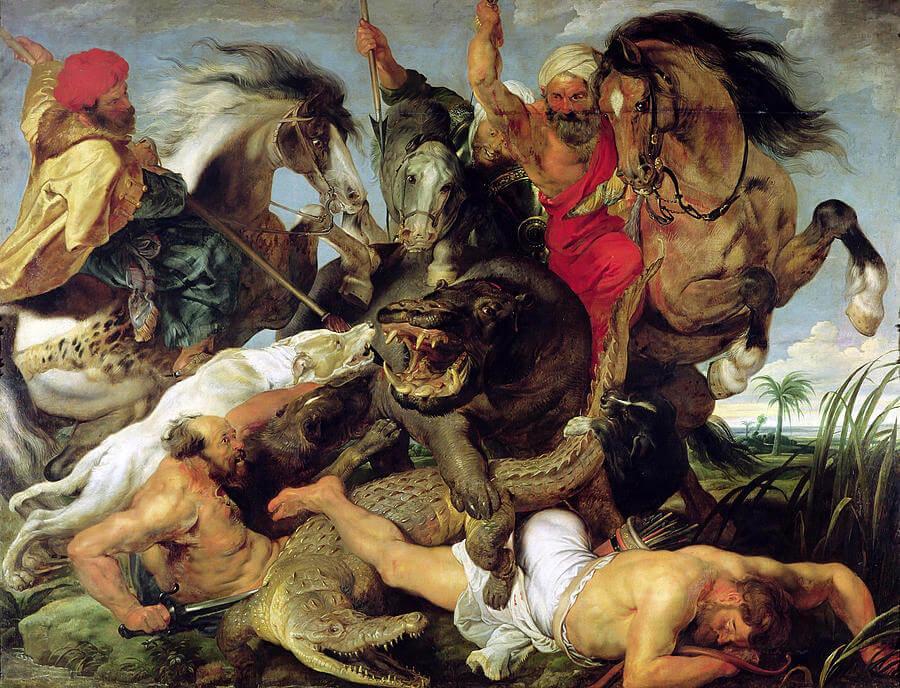
And the more prosaic "Wolf and Fox Hunt."
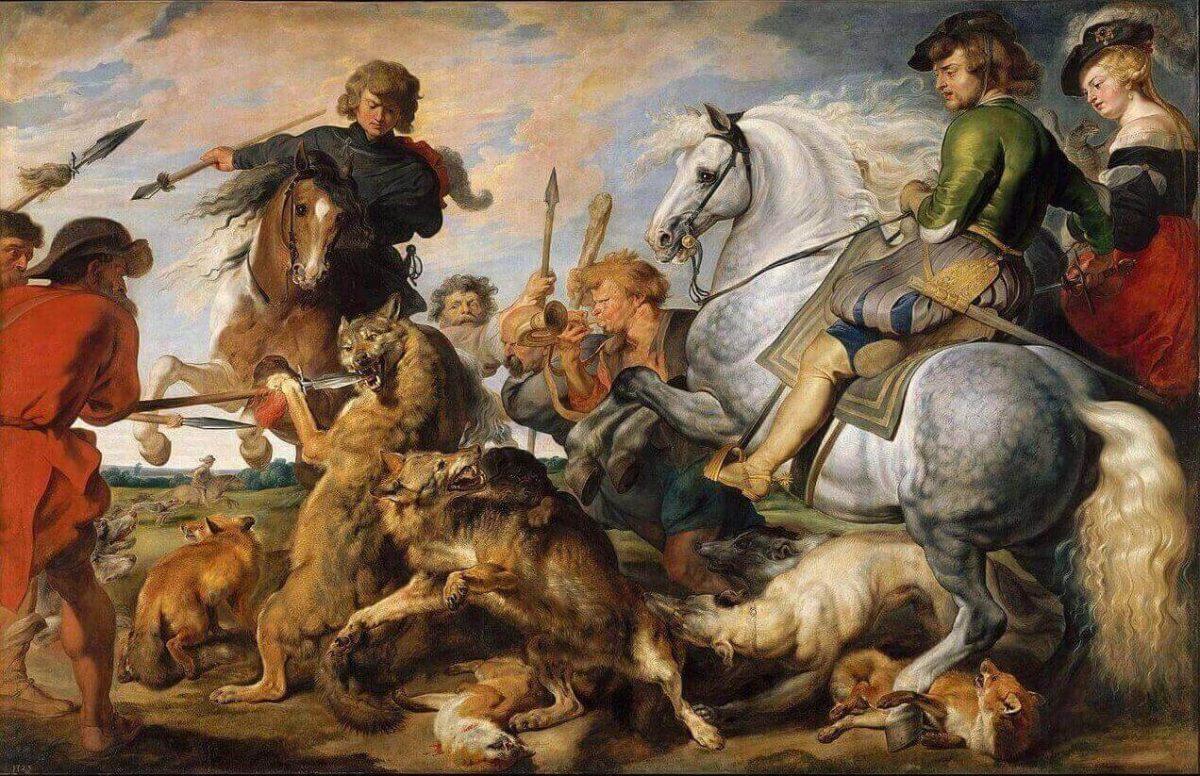
"Hippo" loses to "Lions" due to a simpler composition. It was created 5 years earlier. Apparently Rubens has become adept and in the "Lions" has already given out everything he is capable of.
And in the "Wolf" there is no such dynamics, which the "Lions" stand out so much.
All of these paintings are huge. But for castles it was just right.
In general, Rubens almost always wrote such large-scale works. He considered it below his dignity to take a canvas of a smaller format.
He was a brave man. And he loved more complex stories. At the same time, he was self-confident: he sincerely believed that there had never been such a picturesque challenge that he could not cope with.
It is not surprising that he was given hunting scenes. Courage and confidence in this case only play into the hands of the painter.
Read about another masterpiece of the master in the article "Perseus and Andromeda".
***
Comments other readers see below. They are often a good addition to an article. You can also share your opinion about the painting and the artist, as well as ask the author a question.
Main illustration: Peter Paul Rubens. Hunting for lions. 249 x 377 cm. 1621 Alte Pinakothek, Munich.
Leave a Reply